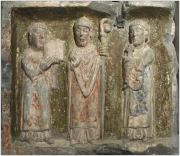Sebastian Salvadó
(Norwegian University of Science and Technology, Trondheim)
Sanctifying the Hispanic March:
Crusades, Politics and the Twelfth-Century Historia of Raymond of Barbastro
Barbastro, located on the foothills of the Aragonese Pyrenees (Spain), was a strategic city for the eleventh- and twelfth-century military struggles between Christian and Muslim kingdoms. Known to historians as the destination of the first official ‘Crusade’ (1063-1065), Barbastro was finally captured by King Pedro I of Aragon and Navarra in 1101. Notwithstanding, for much of the twelfth century this city remained a vulnerable target of continuous Muslim military raids. The present paper seeks to discuss, by examining a hitherto neglected liturgical source, some facets present in the afterlife of Barbastro as a part of the newly formed Christian frontier territories. A late twelfth-century Psalter and Hymnal from the city of Barbastro, currently in the Lleida Capitular Archive (Ms. RC_0029, olim Roda 11), contains a hagiographic portfolio for St Raymond, Bishop of Barbastro-Roda (d. 1126). This liturgical material consists of a vita, a musically noted rhymed office (historia), hymns, a prose, and an additional set of nine readings for the Matins lessons. Written ca. 1138 this material represents one of the earliest extant ‘libelli’ for a saint in the territories of the Spanish March. Historians have long noted the existence of this source, however a critical examination either of its contents or of their implications in the history of the region has not been undertaken. In my presentation, therefore, I seek to present the main characteristics of the saint, and, more importantly, to discuss how his elevation is tied to pressing issues confronting the community of Barbastro. An analysis of the vita and historia reveals the liturgical ‘corpus’ of St Raymond participating in contemporary issues touching on developing a regional crusading ideology, settling ecclesiastical disputes, and acting as a peculiar specula principum to Arago-Catalan nobility.
Sebastian Salvadó is a Postdoctoral Research Fellow in the ESF CULTSYMBOLS project group based at the Norwegian University of Science and Technology, Trondheim. He is currently writing a monograph on the liturgy of sainted kings tentatively titled, Historiae and the Representation of Kingship: The Liturgical Crafting of Sts Oswald and Edmund in the Middle Ages. He is also preparing a second monograph based on his thesis (Stanford Univ. 2011) titled, Devotion and Ritual in the Frankish Liturgy of the Holy Sepulchre in the First Kingdom of Jerusalem (1099-1187). He is generally interested in examining the discourses of liturgy as a source for socio-political history.
